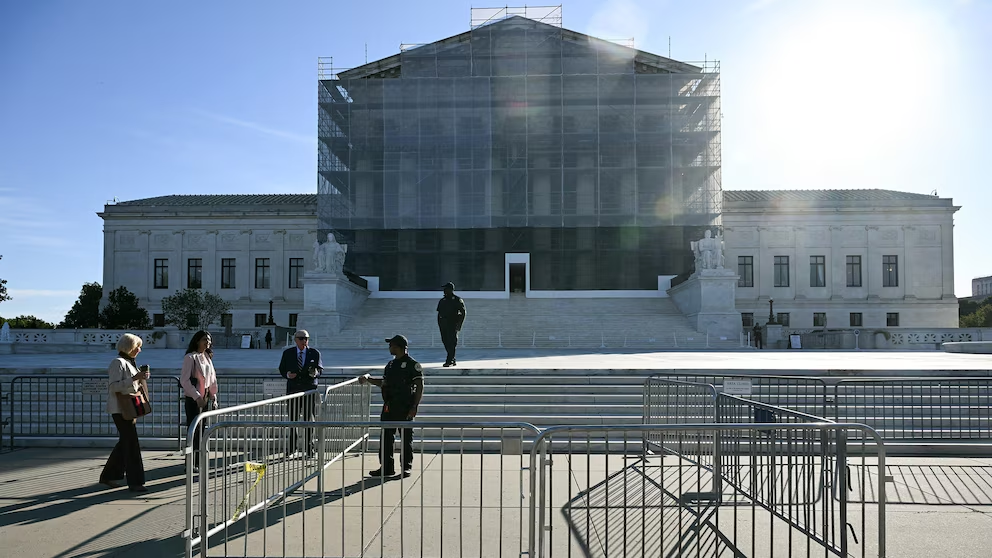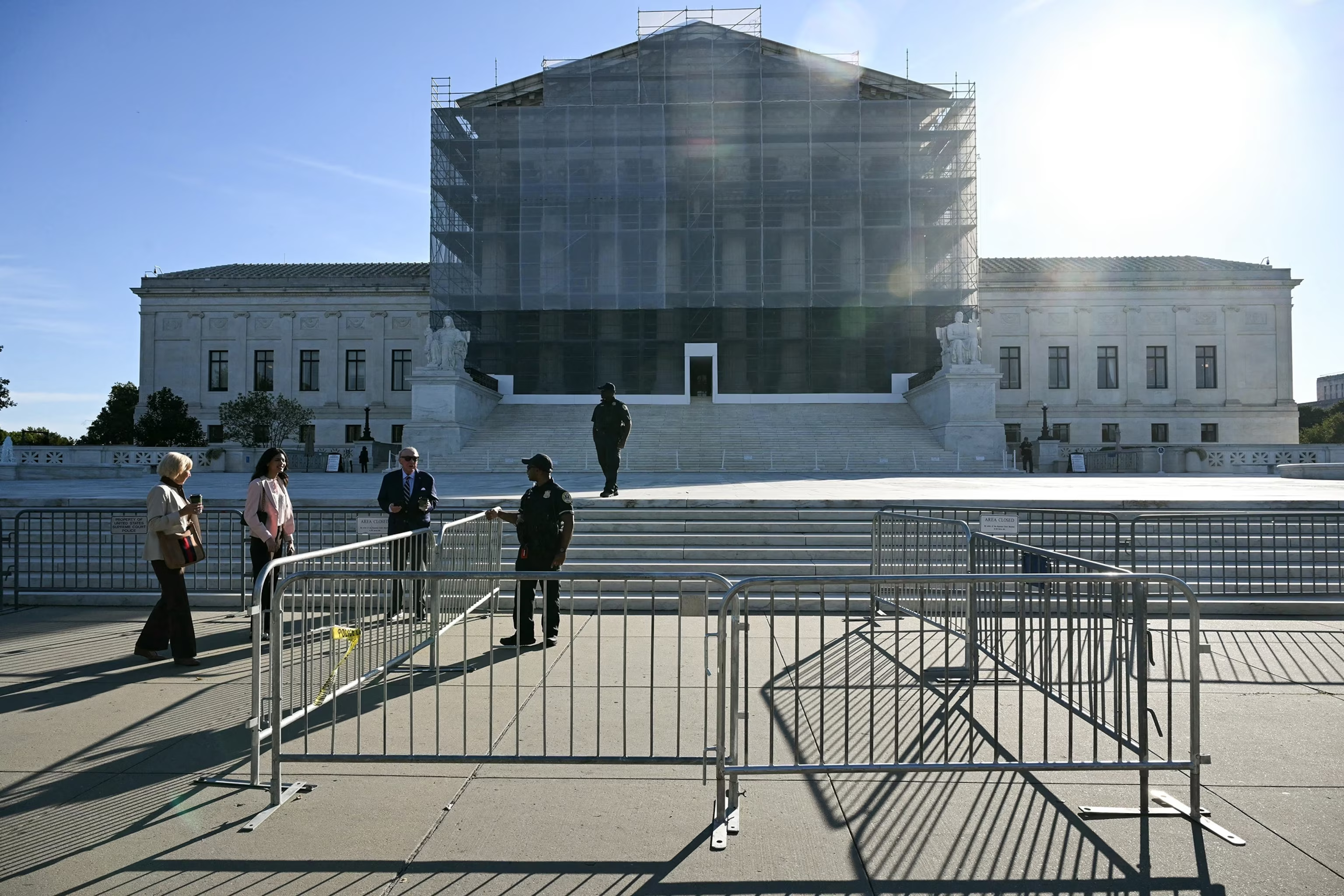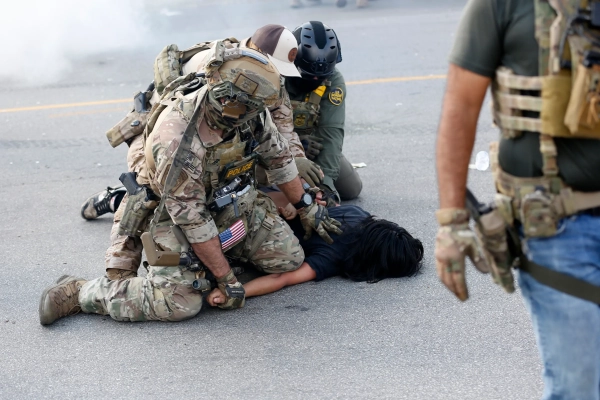
3:25A depiction of the US Supreme Court on October 7, 2025, situated in Washington, DC.Andrew Caballero-reynolds/AFP via Getty Images
Following a verdict from a U.S. court that Louisiana’s congressional layout from 2022 breached the Voting Rights Act through biased treatment of Black voters, the state’s lawmakers devised a fresh map. This new layout featured a second district with a predominantly Black population, aiming to satisfy the legal requirements.
In a highly significant legal battle, with a potential decision date nearing next year’s congressional elections, the U.S. Supreme Court will deliberate this Wednesday on whether factoring in race to create that additional district infringed upon the Constitution.
"The central question is whether a state is allowed to consider race, or even obligated to do so, or if that action contravenes the Equal Protection Clause," stated Sarah Isgur, SCOTUSblog editor and a legal contributor for ABC News.
The conclusion of this matter could shape whether Louisiana, along with numerous other states, might be compelled to revise their maps neutrally concerning race. This, in turn, may influence the representation of minorities and the distribution of influence within legislative bodies across the nation.

A shot of the US Supreme Court on October 7, 2025, positioned in Washington, DC.Andrew Caballero-reynolds/AFP via Getty Images
"This has the potential to be a truly pivotal judgment," voiced Jeffrey Rosen, the president and CEO of the National Constitution Center.
For a considerable period, the highest court in the land has asserted that race should not be the primary determinant in establishing the boundaries of congressional regions. Nevertheless, it has also permitted states some flexibility to acknowledge race to guarantee that minority voters have an equitable chance to elect their preferred officials.
Section 2 of the Voting Rights Act has traditionally served as a safeguard, preventing states from "concentrating" Black voters within specific districts and from "splitting" racial communities into separate districts, with the intent of diminishing their collective electoral strength.
Over a third of Louisiana’s inhabitants are Black. Out of its six U.S. congressional zones, two feature a Black majority; both are represented by individuals from the Democratic Party.
A collective identifying as "non-white voters" initiated legal proceedings against the state regarding the additional majority-minority zone, thus instigating a legal confrontation between two opposing doctrines: Section 2’s mandate for ensuring equal electoral participation for minorities, versus the 14th Amendment’s guarantee of unbiased, race-neutral handling by governmental bodies.
"Section 2 has been fundamentally crucial in protecting voters from racial discrimination at the polls, proving effective in steering us toward a genuine, diverse democracy where ethnic background is immaterial," explained Sophia Lin Lakin, who directs the Voting Rights Project at the ACLU.
"However, what is evident, confirmed in Louisiana, and seconded by multiple federal court decisions, is our journey isn’t complete," she noted.
Louisiana, including its voter appellants, contends in court submissions that racial classifications possess an "exceptionally offensive" quality, thus deeming them unconstitutional. They argue for "absolute zero tolerance for any regard for race," as the state communicated to the judges.
"Should the court embrace these arguments, it could, in effect, dismantle Section 2 altogether," stated Spencer Overton, a law professor at George Washington University. "And in such a scenario, it could potentially enable legislatures such as those in Louisiana, Georgia, Alabama, Mississippi, and Texas to disassemble districts wherein Black and Latino voters currently possess the chance to vote in candidates of their choosing."
"Even within states where legislative bodies demonstrate sympathy toward minority voting rights," Overton further mentioned, "those opposing minority voting rights could launch lawsuits. These suits would allege that electoral regions where persons of color enjoy an opportunity to elect their preferred candidates constitute unconstitutional racial gerrymandering."
The Supreme Court’s conservative majority has shown increasing doubts regarding the appropriateness of racial categorization within diverse areas, including admissions to universities, alongside the electoral system.
In a significant 2013 ruling associated with Shelby County v Holder, the Court substantially undermined Section 5 of the Voting Rights Act. This section had previously obliged states, burdened by a history of racial discrimination, to obtain approval from the Justice Department before instituting revisions to laws concerning voting.
Eight years later, following a slim 6-3 verdict in Brnovich v DNC, the Court curtailed the protections provided by Section 2 concerning regulations surrounding the timing, location, or methodology associated with voting.
"Section 2 stands alone as the only element enforcing significant requirements for the creation of voting regions for racial minorities," Rosen elucidated. "The central issue lies in whether the Voting Rights Act will retain any effective components at all."
The court possesses the power to validate Louisiana’s existing map, maintaining two districts with a majority of minority inhabitants, albeit most legal analysts perceive this as an improbable outcome.
Conversely, the justices might favor the challengers through a focused decision. They could deem the map excessively reliant on race as a factor, thereby compelling the legislature to reconsider the framework. A more extensive ruling could potentially address the broader future of Section 2, clarifying the circumstances under which considering race during gerrymandering processes may or may not remain legal.
A verdict is anticipated near the conclusion of June 2026, coinciding with the conclusion of the court’s session.
Sourse: abcnews.go.com






